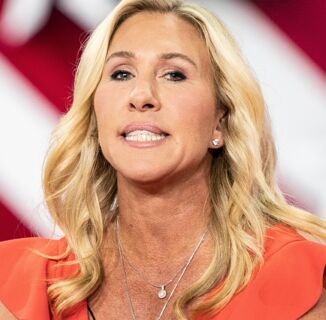The kids are all right — and queer and mostly femme. So let’s talk about that.
According to a new poll of 880 LGBTQ Americans, most LGBTQ adults in America are under 40, women, and religious. The poll consisted of over 100 questions about gender, sex, family, politics and more.

Of those surveyed by BuzzFeed and Whitman Insight Strategies, 55 percent identified as female, 41 percent identified as male and the remaining 4-5 percent identified as queer, non-binary or another term. Thirty-two percent of the group identified as gay, 16 percent as lesbian and almost half — 46 percent — as bisexual. Bisexual respondents were mostly female, much younger and more racially diverse than the rest of the group. People who identify as queer, asexual or something other than L, G or B made up 6 percent of respondents.
Most LGBTQ people — 34 percent of those surveyed — were under 40, more than double the number of people between 40 and 49, 50 and 59, and over 60.
Though only 55 percent of respondents said they’ve come out and 38 percent said they’ve come out to certain people, more than two-thirds of respondents said coming out made them happier. The average age of coming out was 21 and the average age for knowing they were LGBTQ was a little under 17. Gay and trans people know about their identity around 14 while most lesbians found out at 19.
When it comes to marriage, about three in five LGBTQ people want to put a ring on it, while only 14 percent don’t want to get married. Only 31 percent of LGBTQ people support legalizing marriage to more than one person, with the highest amount of supporting coming from trans (55 percent), queer (44 percent) and bisexual (37 percent) respondents.
And then there’s sex: bisexual people have the most sex, with 29 percent having sex once or twice a week and 15 percent of them reporting sex multiple times a week. Eighteen percent of gay people have sex once or twice a week and 14 percent enjoy sex several times every week.
Lesbians have the least sex, with 35 percent of lesbian respondents abstaining in the last year and only 4 percent having sex several times a week.
While the number of respondents is extremely low overall, these numbers are important for several reasons. Bisexual erasure is real and, seeing that bisexuals are actually the largest membership under the LGBTQ umbrella should remind people that anti-bi stigma is a no-no.

Don't forget to share:
Help make sure LGBTQ+ stories are being told...
We can't rely on mainstream media to tell our stories. That's why we don't lock our articles behind a paywall. Will you support our mission with a contribution today?
Cancel anytime · Proudly LGBTQ+ owned and operated
Read More in Impact
The Latest on INTO
Subscribe to get a twice-weekly dose of queer news, updates, and insights from the INTO team.
in Your Inbox












